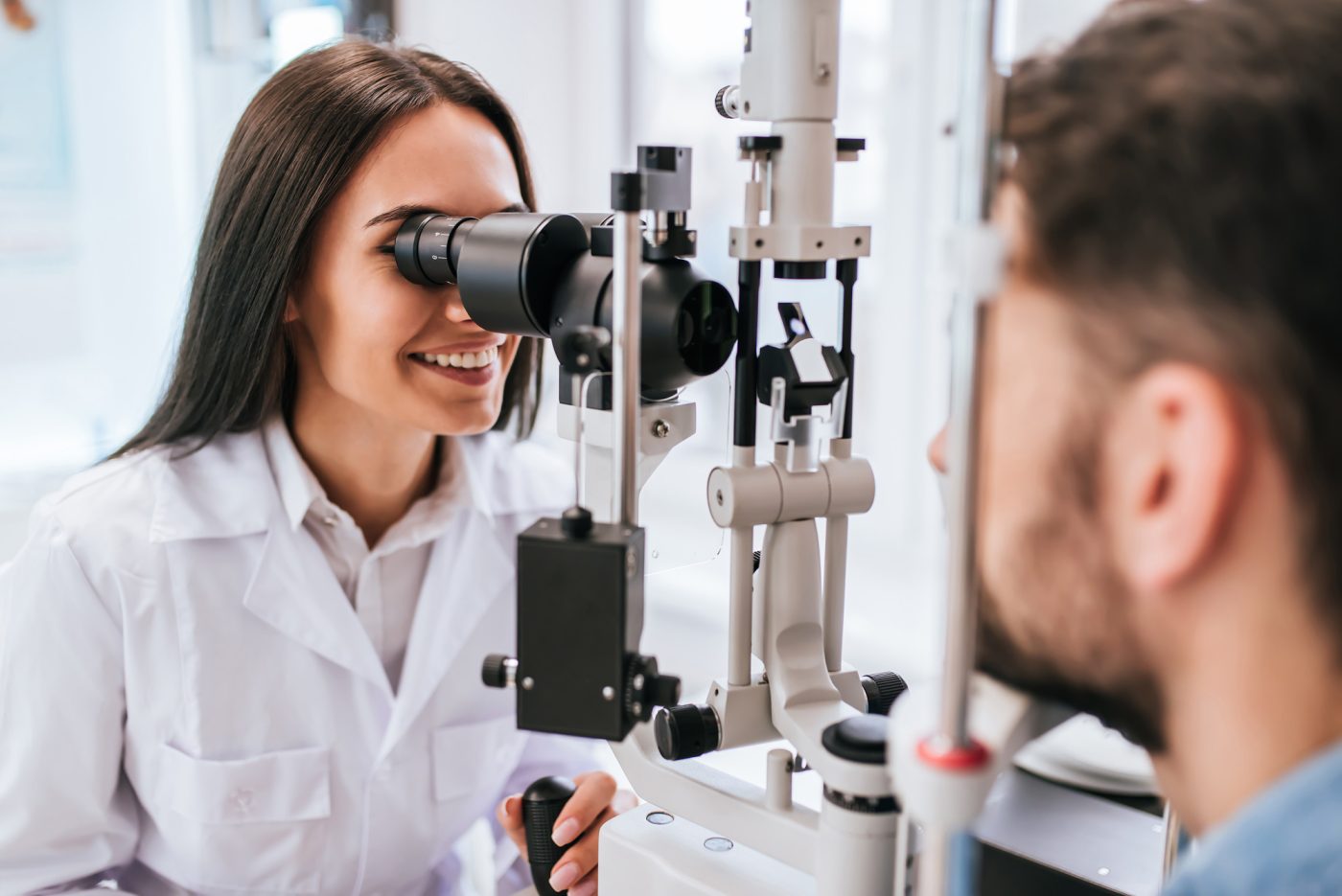You have likely heard the term LASIK eye surgery many times before. Perhaps you have friends or family who’ve even opted to undergo LASIK vision correction, or maybe you have even considered LASIK surgery for yourself. Although LASIK has been performed in the US since the early 90’s, many people are unsure of what LASIK eye surgery is and how it works to improve vision.
What is LASIK Eye Surgery?
LASIK Eye Surgery is an advanced surgical procedure employed to correct common vision problems such as myopia (nearsightedness), hyperopia (farsightedness), and astigmatism. The underlying objective of the procedure is to reshape the cornea, which is the clear front part of the eye, so as to improve the way light is focused or refracted by the eye, and consequently enhance visual acuity. Performed by an ophthalmologist, the LASIK procedure utilizes a specialized device known as an excimer laser, characterized by its ability to remove very fine layers of corneal tissue without causing heat damage to surrounding structures.
The LASIK procedure begins with the application of local anesthetic eye drops to ensure patient comfort throughout. The surgeon then creates a thin flap on the surface of the cornea using a precise instrument called a microkeratome or, in the case of bladeless LASIK, a femtosecond laser. This corneal flap is gently lifted to expose the underlying stromal layer of the cornea. The excimer laser, controlled by a computer and pre-programmed with measurements specific to the patient’s refractive error, is then employed to delicately ablate or remove corneal tissue. Each pulse of this laser removes an incredibly small amount of corneal tissue, allowing the surgeon to flatten (for myopia) or steepen (for hyperopia) the curve of the cornea to bring about more precise focus. For those with astigmatism, the laser is used to smooth an irregular cornea into a more standard shape.
Once the reshaping process is completed, the corneal flap is repositioned back onto the underlying cornea without the need for sutures. This flap adheres naturally and begins the healing process. The actual LASIK procedure is quite swift, typically lasting only about 15 minutes for both eyes, although patients should plan for more time for pre-operative preparations and post-operative care. The majority of individuals notice significant improvement in their vision immediately following the surgery, and the recovery period is generally quite brief, with most patients returning to normal activities within a day or two. While LASIK has a high rate of success and patient satisfaction, it is important to note that it is not suitable for everyone, and potential candidates should undergo a thorough examination and discussion of risks and benefits with a qualified ophthalmologist.
What does “LASIK” stand for?
LASIK, is an acronym for “laser-assisted in situ keratomileusis”. LASIK (taken from the term Laser-assisted in situ Keratomileusis) is a type of refractive surgery used to treat myopia (nearsightedness), hyperopia (farsightedness), and astigmatism (blurred vision). LASIK is an outpatient procedure that is performed by an ophthalmologist, or eye doctor. LASIK surgery has the ability to enhance vision through the use of a laser to reshape the patient’s cornea. The cornea is a part of the eye which helps focus light rays to create an image on the retina. When the shape of the cornea and/or the eye is not perfect, the image one sees can be distorted. This is when LASIK surgery may be an option to improve vision.
How is LASIK performed?
With LASIK surgery, the LASIK doctor will begin by using anesthetic drops in the patient’s eyes. Then, he or she will create a thin, hinged flap in the cornea. The flap is then folded back, and the LASIK surgeon uses a laser to reshape the cornea. This is what allows for improved vision. The LASIK surgeon will use a computer to monitor and track your eye, and to direct and operate the laser during the procedure. After the cornea has been reshaped, the LASIK surgeon will carefully return the flap in the cornea to its original position where it is able to heal without the use of sutures. LASIK eye surgery can be quite short— approximately 5 to 15 minutes in duration.
What kind of laser is used for LASIK?
More LASIK physicians in the U.S., and those at The LASIK Vision Institute, choose the VISX laser technology to perform LASIK vision correction than all other lasers combined. LVI provides its patients the latest FDA clinically approved laser and diagnostic technology in the industry.
If you would like more information on LASIK eye surgery, or if you are wondering whether LASIK is right for you, you could take advantage of a no-obligation Free LASIK Consultation where you can have your vision assessed to find out whether you are a candidate for LASIK and receive more information on LASIK eye surgery.
Introduction to LASIK
LASIK, or Laser-Assisted In Situ Keratomileusis, is a groundbreaking surgical technique designed to correct various common vision issues such as nearsightedness, farsightedness, and astigmatism. It is a procedure that has revolutionized the field of ophthalmology and offered millions of individuals the opportunity to achieve improved vision.
Since its introduction in the U.S. in the early 1990s, LASIK has been a subject of intrigue and curiosity for many. Friends or family members might have opted for LASIK, or you might have considered it for yourself. Despite being widely recognized, many aspects of LASIK are not fully understood by the public. This article will offer an in-depth exploration of LASIK eye surgery, its mechanics, success rate, potential risks, recovery, and the future of this innovative procedure.
Understanding the Basics of LASIK
LASIK is a type of refractive eye surgery that works by altering the shape of the cornea – the clear front part of the eye. The cornea is responsible for focusing light onto the retina to create a clear image. However, if the shape of the cornea is irregular, it can cause distorted vision, known as a refractive error.
These refractive errors include:
- Myopia or Nearsightedness: This condition makes distant objects appear blurry while close objects remain clear. It occurs when the eye is too long or the cornea is too curved, causing light to focus in front of the retina rather than on it.
- Hyperopia or Farsightedness: This condition causes close objects to appear blurry while distant objects remain clear. It occurs when the eye is too short or the cornea is too flat, causing light to focus behind the retina.
- Astigmatism: This condition causes blurred vision at any distance. It occurs when the cornea or the lens inside the eye has an irregular shape, causing light to focus on multiple points in and around the retina
LASIK surgery employs an excimer laser – a type of ultraviolet laser – to remove microscopic amounts of tissue from the cornea to reshape it, correcting the way light enters the eye and hits the retina. This reshaping helps to reduce or eliminate refractive errors, improving the overall quality of vision.
How is LASIK Eye Surgery Performed?
LASIK is a relatively quick and painless procedure. Before the surgery begins, numbing drops are placed in the patient’s eyes to prevent discomfort during the procedure. The patient is then asked to fix their gaze on a target light while the surgeon positions the laser precisely over their eye.
The first step in the procedure involves creating a thin, circular “flap” in the cornea. The surgeon uses a microkeratome, a precise surgical tool, or a femtosecond laser to do this. The flap is then folded back to expose the underlying corneal tissue, referred to as the stroma.
Next, the surgeon uses an excimer laser to reshape the exposed cornea. The computer-controlled laser removes the necessary amount of tissue based on the pre-determined measurements. The laser vaporizes the tissue without generating heat, ensuring a gentle and precise procedure.
Once the cornea is reshaped, the surgeon repositions the corneal flap, which naturally adheres to the stroma without the need for stitches. The entire procedure typically takes about 15 minutes for each eye.
Post-procedure, patients are advised to rest and avoid straining their eyes. Vision may be hazy or blurry for the first day or so, but most patients notice an immediate improvement in their vision.
What Laser Technology is Used in LASIK?
The most common laser technology used in LASIK surgeries is the VISX laser. Many LASIK surgeons, including those at The LASIK Vision Institute, favor VISX technology because it has been extensively tested and approved by the FDA. This laser system is precise and consistent, leading to reliable results.
The VISX system uses a proprietary technology called CustomVue, which creates a detailed map of the patient’s eye. This map is used to guide the laser during the surgery, ensuring each LASIK procedure is customized to the patient’s unique eye shape and vision needs.
Who is a Candidate for LASIK?
LASIK is an excellent solution for many individuals struggling with refractive errors, but it’s not suitable for everyone. Good candidates for LASIK are at least 18 years old, have had a stable prescription for at least one year, and have a common refractive error (nearsightedness, farsightedness, or astigmatism).
Potential candidates must also have corneas that are thick enough to allow the creation of the corneal flap. Certain medical conditions, such as autoimmune diseases, can affect healing and make a person an unsuitable candidate for LASIK.
A comprehensive eye exam is essential to determine if a person is a good candidate for LASIK. During this exam, the doctor will evaluate the patient’s eyes, review their medical history, and discuss their expectations to make a final determination.
What is the Recovery Process Like After LASIK?
One of the key benefits of LASIK is its relatively short and straightforward recovery process. Immediately after the procedure, it’s normal to experience some blurry vision and sensitivity to light. However, these symptoms typically fade within a few hours to a couple of days.
Most patients are able to return to work, driving, and most other everyday activities within 24 to 48 hours after surgery. In the first few weeks following the procedure, it’s crucial to avoid strenuous activities and anything that might lead to eye injury. Regular follow-up visits will be scheduled to monitor the healing process.
It’s also worth noting that while many patients experience immediate improvements in their vision, it may take up to six months for vision to completely stabilize.
How Much Does LASIK Cost?
The cost of LASIK can vary widely depending on several factors, including the surgeon’s experience, the type of laser technology used, and the geographic location of the procedure. On average, you can expect to pay between $1,000 and $4,000 per eye.
While insurance typically does not cover LASIK as it’s often considered a cosmetic procedure, many clinics offer financing options to help patients manage the cost. It’s also worth considering the potential savings from no longer needing to purchase glasses or contact lenses.
Categories



